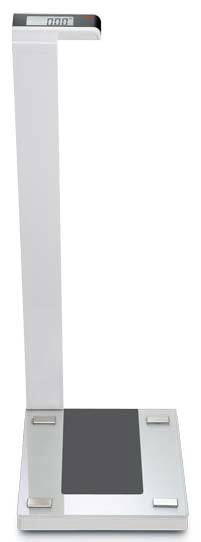Home » Hospital & Durable Medical Equipment » Tips For Using Medical Scales » Tips For Using Medical Scales
Tips For Using Medical Scales

Digital Column Weighing Scale - 750 lbs. Capacity
Retail Price: $694.95
Your Price: $580.38
 Unit: single
Unit: single

Digital Scale w/ Glass Platform
Retail Price: $342.31
Your Price: $292.89
 Unit: single
Unit: single

Digital Column Weighing Scale - 750 lbs. Capacity
Retail Price: $594.50
Your Price: $504.90
 Unit: single
Unit: single
Medical scales are some of the most accurate weight measurement systems available. Unlike simple bathroom scales, the types used in doctor's offices, clinics, gyms and laboratories are designed to be both consistent plus they allow calibration the system between uses. However, they are also very good for home use, especially when accuracy is critical in obtaining weight.
Unlike a standard bathroom scale, medical scales can be fairly substantial in size. They are designed differently from manufacturer to manufacturer but all have the same general features and, with some manufacturers, they may be listed as mechanical scales. They include a raised platform for the patient or individual to stand on and a column or vertical post. On this post, which is typically about 3 feet in height, sits two sliders for weights to move across two different rods or flat bars. These two bars join and form a tip that sits within a slot in a metal upright attached to the frame.
To accurately use medical scales start by removing all extra weight from the body. Many people in a medical setting will be weighed in a hospital gown, which only weighs a few ounces. However, if you are weighing at home or in the gym try to wear the same clothing items each time. It is a good idea to set a standard by removing your shoes and socks and wearing just a t-shirt and shorts or weighing in the privacy of your home without any clothing. Check to make sure both the heavy weight and the lighter weight are at the zero side of the respective bars.
Step onto the scales, facing towards the column and the two sliders. Try to keep your feet balanced on the scale, slightly out from the middle by still firmly on the scale platform. Allow the slight movement of the platform to come to a complete stop. When the medical scales have stop moving then use the larger bottom weight and slide it slowly from the zero weight end to the higher weight end. Typically there will be notches that the weight will drop down into at the 50, 100, 150, 200 etc. points on the bar, increasing by 50 pounds per notch. Make sure that the weight is fully in the notch and not just resting on the bar for the highest degree of accuracy.
As the weight is moved across the lower bar you will notice that the tip of the scale that protrudes through the notch will drop. After the tip fully hits the bottom of the notch back the large weight up one notch. The tip of the scale should move up closer to the top of the notch. At this point slide the smaller weight across from the zero end towards the 50 pound end. Somewhere between zero and 50 the tip will drop in the slot to the middle, touching neither the top nor bottom of the slot. At this point you can read your weight.
To read medical scales simply add the weight value at the lower, heavier weight notch to the weight amount on the lighter weight bar above. If the lower weight was sitting in the 100 pound notch and the lighter weigh was in the 35 pound notch then the overall weight of the individual would be 130 pounds.
Some models of medical scales may offer a more specific type of balance and read technique. This includes a line on the frame of the slot that matches up with a line on the end of the movable sliding part of the scale. Lining up the two lines so they are perfectly horizontal gives a very accurate read. Mechanical scales are slowly being replaced by digital options in many settings. The benefit to these scales is they are easy to calibrate by using a standard measure and small adjusting screws to bring the scale into balance if it is not accurate.














